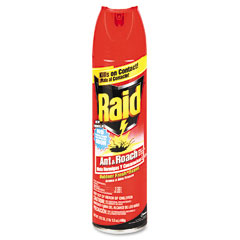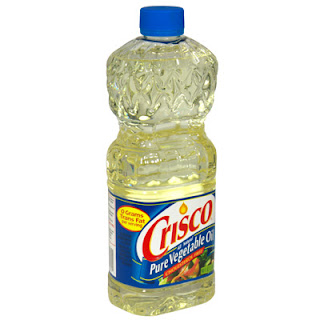Activity 3: Common Molecules, Structures and Names
Now that we have some familiarity of atoms, Activity 3 explores how elements come together to make molecules.
In brief, the electrons that surround elements interact in a good way with electrons around other elements to create chemical bonds. These chemical bonds are what hold atoms together to form molecules. Molecules are the most common form of chemical substances that we experience everyday in our lives. If you go to Tylenol on wikipedia there is a good example of information on the molecule and the chemical structure of Tylenol. In the upper right of the page there is a structure called a Ball and Stick model. This model represents atoms that are held together by chemical bonds. In this model (which is quite common for chemistry) the black balls represent carbon atoms, the white balls represent hydrogen atoms, the blue balls represent nitrogen atoms, and the red balls represent oxygen atoms. Notice that it is possible to have 1 or even 2 bonds between some of the atoms. The other image is called a Kekule Diagram. This is the short-hand method that scientists use to draw molecules. It is very common for scientists to not indicate the carbon and hydrogen atoms since these are so common in molecules it becomes quite tedious! So it becomes necessary to understand that the Kekule structures are short-hand notation for the more accurate Ball and Stick model. The other common information needed for molecules is the molecular formula (this is the count of each type of atom in the molecule) and the formal chemical name. While in wikipedia on Tylenol, if you click on acetominophen or paracetamol you come to a page that has the detailed chemical information on this common drug. On the upper right is the same images. Under the images you will notice the systematic or IUPAC name. This is the name that scientists call this molecule. Also on the right you will notice the detailed chemical properties for this molecule, one of which is the formula, C8H9NO2. So, in Tylenol there are 8 carbon atoms, 9 hydrogen atoms, 1 nitrogen atom and 2 oxygen atoms.
For this activity students are to explore the web and find chemical structures and names for everyday molecules. Remember Wikipedia tends to be a great resource for this info!
Questions/Activities:
1. Post a picture of three 3-dimensional Ball and Stick molecular models(choose your three favorite molecules) that you have created with common items around your home. Also post a molecular structure image(image from the web, of either a Kekule Structure or a Ball and Stick Model) and the IUPAC name of the molecule.
 |
Molecular structure of glucose C6H12O6 |
 |
| Hydrogen peroxide (H2O2) |
 |
Water Molecule Structure H2O |
2. Post an image from the web, the chemical systematic (IUPAC) name, common name, and the molecule formula for 20 chemicals that you use or eat. Explore the ingredients of things like cosmetics and foods.
1.
| Bleach (laundry) | Sodium hypochlorite | NaClO |
2.
| Epsom salts | Magnesium sulfate heptahydrate | MgSO4*7H2O |
3.
| Salt, table | Sodium chloride | NaCl |
4.
| Sugar, table | Sucrose | C12H22O11 |
5. Baking Soda Sodium Bicarbonate Sodium Na
6. White vinegar, Acetic Acid CH3COOH + H2O
7. Aluminum foil, Aluminum, Al
8. Ammonia household cleaner, Azane, NH3
9. Nail polish remover, Propan-2-one, CH3COCH3
10. Egg shell, Calcium Carbonate, CaCo3
12. Insecticide, Boric Acid, H3BO3
13. After Shave, Potassium Alum, KAl(SO4)2
14. Hair Dye, Diaminobenzine, C6H4(NH2)2
15. Rubbing Alcohol, Isopropal Alcohol, C3H8O
16. Propane Gas, Propane, C3H8
17. Shampoo, Galaxolide, C18H26O
18. Starch, Glucose, C6H12O6
19. Vegetable Oil, Octadeconoic Acid, C18H36O2
20. Sun Screen, Qxybenzone, C14H12O3
3. Look over your molecules and the bonding characteristics, how many bonds does each of the following elements typically have? Carbon? Hydrogen? Oxygen?
Carbon and Oxygen are more likely to have a double bond while Hydrogen has one.
4. What does IUPAC stand for?
International Union of Pure and Applied Chemistry
5. As you explore ingredients, notice how everything around us is made up of chemicals consisting of atoms bound together into molecules. But what about companies that claim their products are chemical free! How can this be? Here is an example:
http://www.naturalhealthcareproducts.com/Cleaning-Products.php
Do a little web searching and propose what chemicals are actually in this product. Keep in mind, that everything at the molecular level is a chemical, whether it be made in nature or in a lab.
After this class I realize it is impossible to really go "chemical free" however when they advertise these product I feel that they mean free of harmful toxins and mixtures of chemicals that are more harmful for the environment. They are trying to look for alternatives that use less chemical "mixtures" that are harmful while still using some of the same chemical ingredients. Everything at the molecular level is chemical even water and other things made in nature. It is the way we combine the chemical that make them harmful which is why chemistry class is so important. According to Wikipedia, "Chemical free or chemical-free is a term used in marketing to imply that a product is safe, healthy or environmentally friendly because it only contains natural ingredients. The term is a misnomer, as nothing that physically exists is free of chemicals. The term "chemical" is roughly a synonym for matter, and common natural substances such as water and air are considered chemicals". In the product, Laundry Powder Concentrate, as advertised in the website, it talks about how it is "Charged with Oxygen" and "the fresh aroma is from Australian eucalyptus oil" which tells us that they are mixing chemicals to create this product. Just in the eucalyptus oil itself has chemical components that are made up of: a-pinene, b-pinene, a-phellandrene, 1,8-cineole, limonene, terpinen-4-ol, aromadendrene, epiglobulol, piperitone and globulol. So no matter how much we try nothing will ever be chemical free but we can use a safer less harmful combination of chemicals.























No comments:
Post a Comment